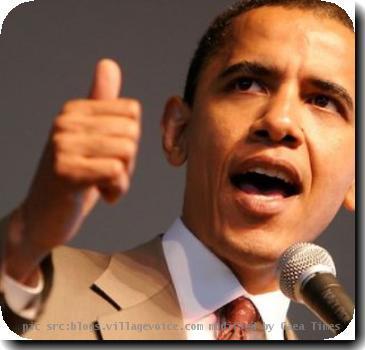Recovery slows in second quarter to weakest pace in nearly a year as consumers turn cautious
By Jeannine Aversa, APFriday, July 30, 2010
Recovery loses speed as consumers turn cautious
WASHINGTON — The recovery is losing so much momentum that employers are unlikely to step up hiring anytime this year, and unemployment could return to double digits.
That was the bleak conclusion of analysts Friday after the government said economic growth crawled at a 2.4 percent pace in the spring. It was the economy’s weakest showing in nearly a year. And many economists think growth is even slower now.
Consumers spent less, companies slowed their restocking of shelves and the nation’s trade deficit exerted a stronger drag on the economy in the April-to-June quarter.
The Commerce Department report also showed the recession was deeper than previously estimated, according to revisions of the data. Its depth helps explain why the economy is now struggling so much, with shoppers reluctant to spend and employers slow to hire.
“We’re headed into the third quarter with little momentum, and most everything is tracking weaker,” said Mark Zandi, chief economist at Moody’s Analytics. “Because of that, I expect unemployment to rise back to double digits, hitting 10 percent in December and staying there early next year.”
Businesses stepped up their spending last quarter, propelled in part by government stimulus. But those gains aren’t likely to be repeated, economists said.
The one exception is in equipment and software. Companies invested in those areas last quarter at the fastest pace in 13 years. And they are expected to keep up that spending. But that won’t be enough to invigorate the rebound.
In fact, their investments in technology could actually crimp hiring. Companies are investing in productivity-enhancing equipment that reduces the need to expand their work forces. Instead, they can produce more from their existing employees.
Congress may feel pressure to pass more stimulus measures to speed the recovery. So far, Republicans and some Democrats have blocked additional spending because of their concerns about the size of the deficit.
The Federal Reserve is exploring new steps to bolster the recovery in case the economy flashes dangers signs of sliding back into recession.
Investors reacted to the report with disappointment. Stock futures fell in the hour before the markets opened. But losses moderated after the University of Michigan/Reuters consumer sentiment index for July rose slightly more than expected.
The report also showed that the economy grew at a 3.7 percent pace in the first three months of this year. That was much better than the 2.7 percent pace estimated just a month ago.
Still, the recovery has been losing air for two straight quarters. Concerns have arisen about whether it will fizzle out — or even tip back into a “double-dip” recession.
The economy began to grow in the third quarter of last year after having suffered the worst recession since the Great Depression. And in the final quarter of 2009, the economy surged at a 5 percent pace. That was the high-water mark of the rebound so far.
Much of the expansion was powered by the government’s $862 billion stimulus package of tax cuts and spending. Also, companies helped energize growth with a burst of spending to replenish inventories that had been cut down during the recession.
Now, those forces are fading. As they do, doubts are growing about whether the private sector can boost spending and investment enough to fuel the recovery.
Consumer spending, usually the lifeblood of the economy, slowed in the second quarter. Such spending rose at an anemic 1.6 percent pace. That was down from a 1.9 percent pace in the first quarter. It also was the weakest showing since the end of last year.
Instead, Americans saved more. They saved 6.2 percent of their disposable income in the second quarter, the highest share in a year.
“The U.S. recovery remains patchy and heavily reliant on government support and inventory rebuilding,” said Sal Guatieri, economist at BMO Capital Markets Economics. “Optimism would improve if companies shifted spending towards hiring, from machines.”
For the first time in two years, builders boosted spending on commercial projects last quarter. And home builders spent the most in 27 years. Many expect that to fade now that federal homebuying tax credits have expired. Economists think spending in both those sectors turned negative in the current quarter.
Stripping out business investments in inventories and sales of exports, so-called “final sales to domestic purchasers” rose at a 4.1 percent pace in the second quarter, the most in four years. That looks good on the surface. But that spending was juiced by the government’s homebuyer tax credit and other government aid, economists said.
They predict this figure— a barometer of domestic demand — will shrink in the coming quarters, reflecting tightfisted consumers, spending cuts on building projects and less robust federal spending.
The federal government boosted spending at a 9.2 percent pace, the most in a year. Economists predict that growth will slow. State and local governments, coping with budget shortfalls, surprisingly increased their spending for the first time in a year. Economists think more spending cuts are coming at the state and local level.
In the revisions issued Friday, the government estimated the economy shrank 2.6 percent last year — the steepest drop since 1946. That’s worse than the 2.4 percent decline originally estimated.
It takes about 3 percent growth in gross domestic product just to create enough jobs to keep pace with the population increase. Growth would have to equal 5 percent for a full year to drive the unemployment rate down by 1 percentage point.
Gross domestic product measures the value of all goods and services produced within the United States. It is the best gauge of the nation’s economic health.
The government takes three cracks at estimating growth for a given quarter. The estimate Friday was the government’s first one for the April-to-June quarter. Missing from this initial estimate are the final results on trade and inventory investment activity, so the government makes estimates based on preliminary materials.
Tags: Barack Obama, Consumer Spending, Detroit, Labor Economy, North America, Recessions And Depressions, United States, Us-economy, Washington



